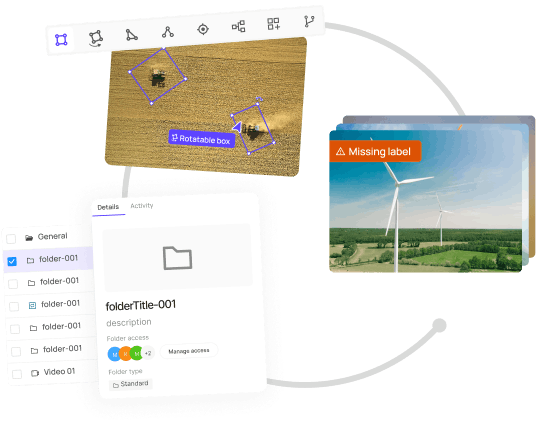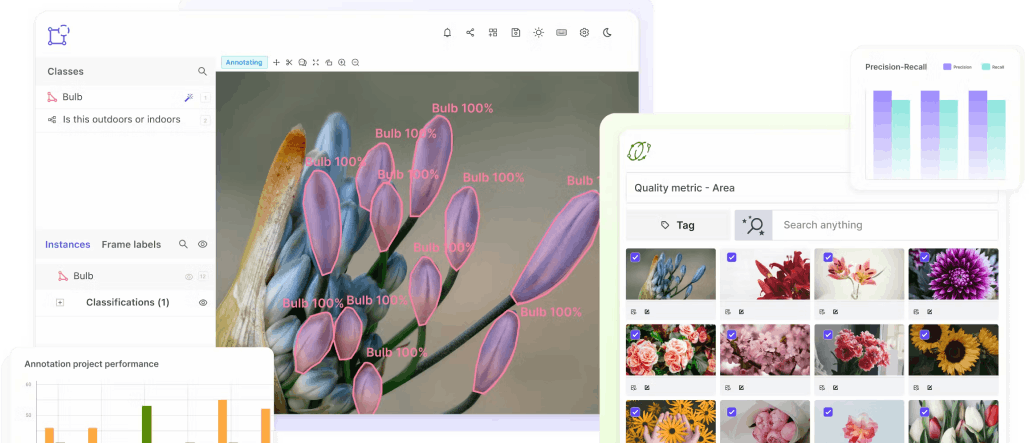Blur
Encord Computer Vision Glossary
Blur is a common occurrence affecting images and videos, presenting notable challenges for computer vision systems. Whether arising from motion, focus errors, or other factors, blur inhibits precise interpretation and analysis of visual data. In the field of computer vision, the capability to extract meaningful information from blurry images holds immense importance for diverse applications, including object detection, image recognition, and autonomous navigation. This article explores the complexities surrounding blur in computer vision, discusses its implications, and provides insights into the approaches employed to mitigate its effects, consequently enhancing the performance of computer vision systems.

Understanding Blur in Computer Vision
Blur in computer vision refers to the loss of sharpness or clarity in images or videos. It can occur due to different factors, including camera motion, object motion, incorrect focus, or optical limitations. Understanding and handling blur is essential because it directly impacts the quality and reliability of computer vision algorithms. Some key types of blur encountered in computer vision include:
Motion Blur
Motion blur occurs when there is relative motion between the camera and the scene being captured. This can happen due to camera shake or movement of objects within the scene. It results in a smearing effect, making the captured image or video appear blurred.
Defocus Blur
Defocus blur occurs when the camera fails to focus properly on the subject of interest. It can be caused by incorrect camera settings, improper lens calibration, or capturing objects at varying distances from the camera. Defocused images appear blurry, with the level of blur increasing as the distance from the focused point increases.
Gaussian Blur
Gaussian blur is a common blur technique used for smoothing or reducing noise in images. While it is intentionally applied in some cases, it can also occur as a result of image compression or other processing techniques, potentially affecting the clarity and accuracy of computer vision tasks.
Implications of Blur in Computer Vision
The presence of blur in computer vision poses several challenges and implications for the accuracy and reliability of vision-based algorithms:
{{training_data_CTA}}
Object Recognition and Detection
Blur can significantly impact the performance of object detection and recognition systems. Blurred images may obscure key features, making it difficult for algorithms to accurately identify and locate objects of interest.
Image Classification
Blur can affect the discriminative power of image classification algorithms. Blurry images may lead to misclassification or decreased accuracy, as important visual cues and details are often lost.
Tracking and Localization
Blur can hinder the tracking and localization of objects in videos or real-time applications. When objects are blurred or suffer from motion blur, it becomes challenging for computer vision systems to accurately track their movements or determine their precise location.
Autonomous Systems and Robotics
Blur can have critical implications for autonomous systems and robotics. In scenarios such as self-driving cars or drones, the ability to perceive and interpret clear visual information is crucial for safe and reliable operation. Blur can affect object detection, obstacle avoidance, and navigation tasks, potentially leading to safety risks.
Mitigating Bias in Computer Vision
Efforts to mitigate blur in computer vision focus on enhancing image quality, restoring sharpness, and improving the performance of vision-based algorithms. Several approaches and techniques are employed to address blur-related challenges:
Deblurring Algorithms
Deblurring algorithms aim to recover sharpness and remove blur from images or videos. These algorithms utilize techniques such as blind deconvolution, which estimates the blur kernel and reverses the blurring process. Deblurring algorithms help restore image clarity and improve the performance of subsequent computer vision tasks.
Image Restoration Techniques
Various image restoration techniques can be employed to mitigate the effects of blur. These techniques involve enhancing image details, reducing noise, and enhancing edge sharpness. They can involve methods such as image sharpening, denoising, and edge-preserving filters. By applying these techniques, the visual quality of blurry images can be enhanced, making them more suitable for computer vision algorithms.
Multi-Image Fusion
In some cases, multiple images of the same scene captured under different conditions can be fused together to mitigate blur. By aligning and combining multiple images, the final result can exhibit reduced blur and improved visual clarity. This approach is particularly useful when dealing with motion blur or camera shake.
Deep Learning-Based Approaches
Deep learning has shown promise in addressing blur-related challenges. Convolutional neural networks (CNNs) can be trained to learn the mapping between blurry and sharp images, enabling the restoration of blurred content. By leveraging large-scale datasets and sophisticated architectures, deep learning models can effectively reduce blur and enhance the quality of computer vision inputs.
Image Quality Assessment
Evaluating the quality of images affected by blur is essential for detecting and addressing the impact of blur on computer vision tasks. Image quality assessment metrics can be used to quantify the level of blur and guide subsequent processing steps. By incorporating quality assessment into the pipeline, algorithms can make informed decisions based on the reliability of the visual data.
Adaptive Algorithms and Techniques
Adaptive algorithms and techniques can be employed to address varying levels and types of blur. These approaches dynamically adjust the parameters and settings based on the estimated blur characteristics, allowing for more effective and tailored processing. Adaptive techniques can enhance the robustness of computer vision algorithms in dealing with diverse blur conditions.

Conclusion
Blur poses significant challenges for computer vision systems, impacting object recognition, image classification, tracking, and localization tasks. However, through the use of deblurring algorithms, image restoration techniques, multi-image fusion, deep learning-based approaches, and adaptive algorithms, the adverse effects of blur can be mitigated. By enhancing image quality, restoring sharpness, and leveraging advanced algorithms, computer vision systems can overcome the challenges presented by blur, leading to improved accuracy and reliability in visual analysis. As the field of computer vision continues to advance, addressing the impact of blur will be crucial for enabling more robust and effective vision-based applications.